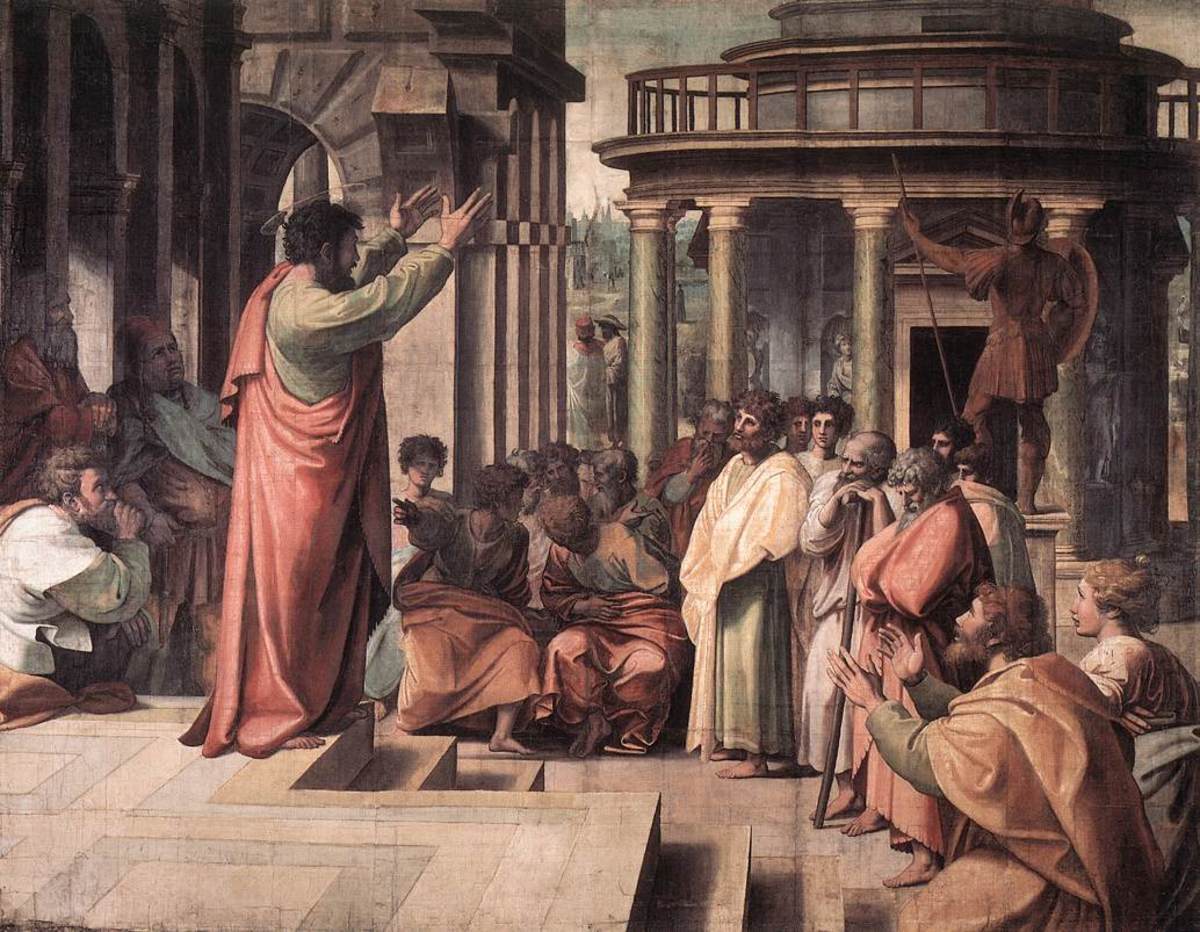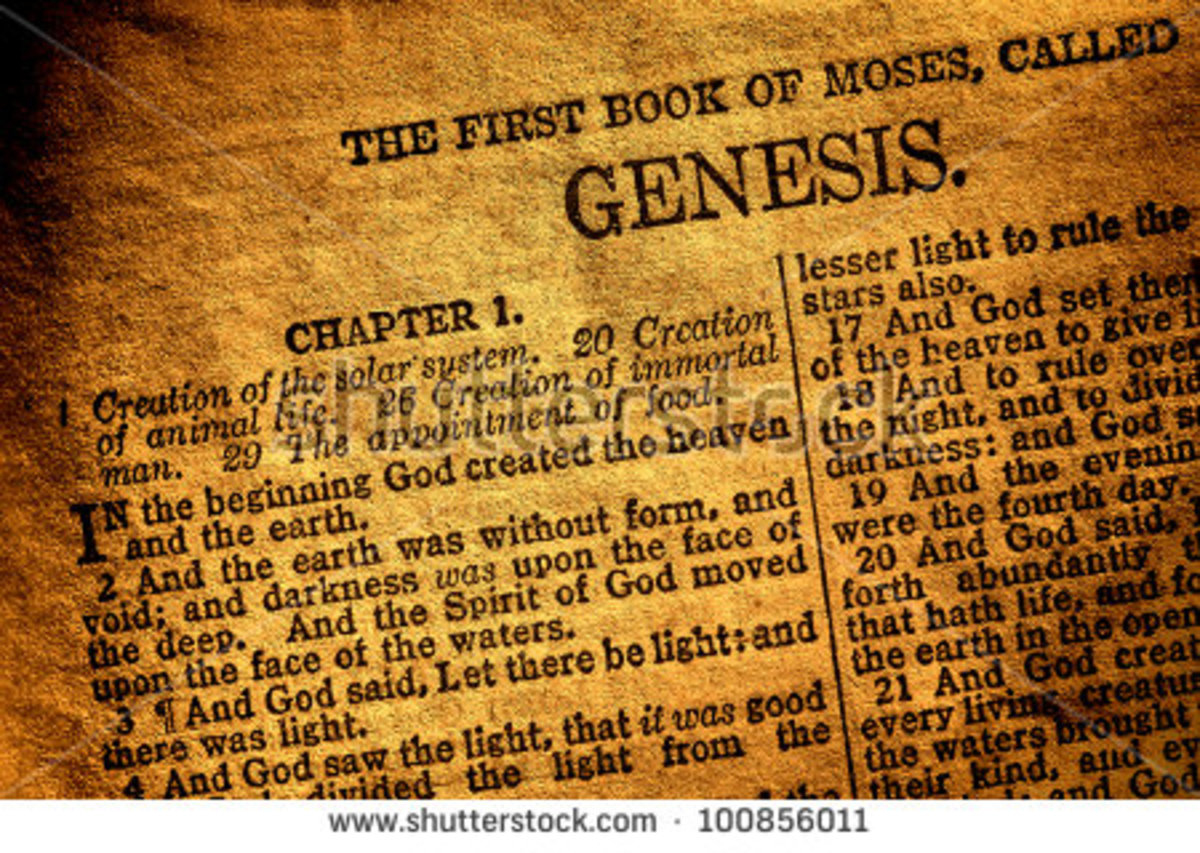Apocalypticism and Eschatology in Jesus's Teachings and Early Christianity
The Modern Relevance of Apocalyptic Thought
Is apocalyptic thought consonant and applicable to our current, post-modern and scientific worldview?



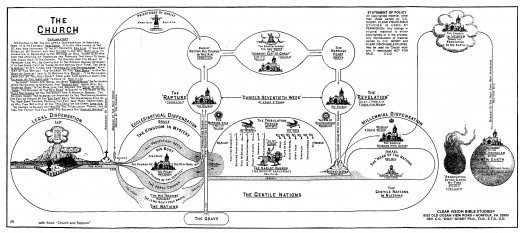
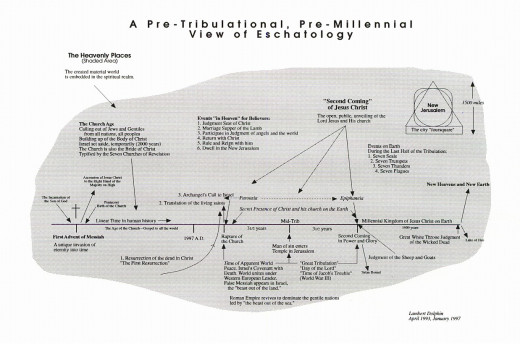
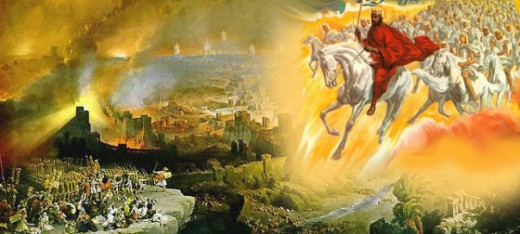
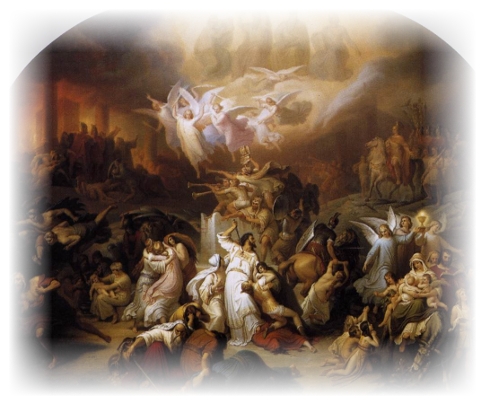
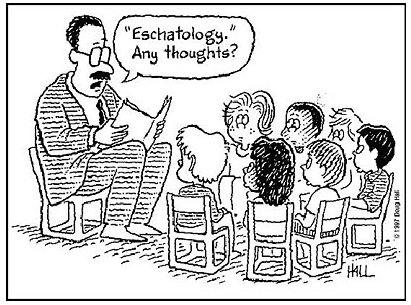
The role of Jewish apocalyptic thought and its eschatological ramifications are often overlooked in relation to the teachings of Jesus and early Christianity. As it turns out, Jesus and his early followers, while not merely copying their apocalyptic forebears and contemporaries, were certainly influenced by them and shaped apocalyptic and messianic thought in interesting and unique ways. Thus, it will be instructive to analyze and consider typical aspects of Jewish apocalyptic thought alongside its general purpose. Considering this, we might better appreciate and understand Jesus’s apocalyptic eschatology, which, while sometimes contested, shares considerable eschatological diction with Jewish apocalyptic literature. These themes were preserved and expanded upon in the context of the early Christian community, particularly in the contexts of Paul’s letters and the Book of Revelation. The latter, despite the fact that it was likely composed more than half a century after Jesus’s death, nevertheless bears much resemblance to Jewish apocalypses of the 3rd through 1st centuries BCE. However, just as Jewish apocalyptic authors revised material and reapplied it in new ways, so too did the Christians modify the apocalyptic tradition they inherited. Hence, by focusing on the literary and spiritual tradition apocalypticism, one can notice the very Jewish nature of Jesus and his early community while also appreciating their progressive divergences and eventual differentiation.
The search for a suitable definition of apocalyptic literature has been long, contested, and is, like so many other issues in academia, still in progress. There is the “‘essentialist’ definition” of E.P. Sanders, which asserts that “Jewish apocalypses [are] a combination of the themes of revelation and reversal (of the fortunes of a group, either Israel or the righteous)” (Collins, Apocalyptic Imagination, 8). This definition, however, is unsatisfactory for John Collins, who asserts that “the combined themes of revelation and reversal are characteristic of the whole tradition of biblical prophecy” (8). Moreover, the above definition “takes no account at all of the cosmological and mystical tendencies in the apocalypses…” (8). Thus, Collins argues that apocalypses constitute “a genre of revelatory literature with a narrative framework, in which a revelation is mediated by an otherworldly being to a human recipient, disclosing a transcendent reality which is both temporal, insofar as it envisages eschatological salvation, and spatial insofar as it involves another, supernatural world” (4). What is crucial here, and which constitutes the element that distinguishes apocalyptic works from biblical prophecy, is the central role of the supernatural world and supernatural beings. Furthermore, and perhaps equally important, is the general belief in some kind of retribution beyond death, or at the very least, beyond this current age, which overtly appears unfair, incorrect, or inconsistent with Jewish religious teachings. This operative definition would allow the scholar to logically assume that apocalyptic thought and literature would be absent or lacking in certain groups. For example, the Sadducees (a thought-school of Judaism most commonly known to most through the New Testament), would have been unlikely to create or give any credence to apocalyptic works, since their worldview excluded the existence of otherworldly beings, such as angels, and tended to discredit personal revelations, prophetic or otherwise. To further our understanding of apocalyptic concepts, let us now investigate their genesis and their literary and functional roles.
It has been noted by many scholars of apocalypticism, and Judaism in general, that spiritual concepts found in the Jewish apocalyptic literature of the 3rd through 1st centuries BCE are entirely absent in earlier Jewish belief structures. For example, “interest in the judgment of the dead is one of the motifs that clearly distinguish[es] Jewish apocalypses from the earlier biblical tradition” (27). Additionally, “the motif of the otherworldly journey, both ascent to heaven and descent to the netherworld, was widespread in antiquity” and was appropriated by Jews during the Hellenistic Period (26). We must recognize, however, that these motifs and concepts were not merely repeated verbatim; instead they were reshaped and modified in order to fit within a Jewish, monotheistic theology and presented under the pseudonymous name of a figure from the distant past in order to lend the composition authority. For example, the periodization of history (a common theme in apocalyptic literature) can be found in the contexts of both Persian Zoroastrianism and Hellenistic literature (most famously in Hesiod’s Works and Days) (74). However, this formula was altered in the Jewish context in order to present the episodic periods of dominance by Gentile kingdoms as part of God’s redemptive plan, having been deterministically set in motion since Creation, the conclusion of which would be Israel’s victory and dominance over the world. Determinism and redemptive plans are common in apocalyptic thought and are especially present in the literature of the Essenes of Qumran, who held that after a period of persecution God members of the heavenly host would descend to earth and join the members of the community in an eschatological war that would bring an end to all wickedness (Collins, Apocalypticism in the Dead Sea Scrolls, 103). The War Rule (an essential text of “the Dead Sea Scrolls”) set out specific guidelines as to how the battle was to be conducted, and reflected both Roman tactics (an extra-Judaic element) and Jewish concerns of purity and sabbatical observance (essential Jewish practices) (96 + 98). While clearly demonstrating the mixture of both Jewish and non-Jewish material, The War Rule also exhibits other common themes of the apocalyptic genre aside from determinism and the redemptive pattern of history (noted above), most specifically dualism (on both the anthropological and historical levels) and the concept of a final judgment that places the rest of history into a uniquely eschatological perspective.
Another element of apocalyptic literature that is worthy of recognition is the employment of mythological symbolism to subvert traditional interpretations of those symbols, thereby adding depth and multiplicity to the meaning (Collins, Apocalyptic Imagination, 14). Oftentimes, this provided a context wherein extra-Judaic material was appropriated and utilized. This, combined with pseudonymous authorship, would present the work as having both great authority and profundity. For example, while scholars have already recognized the influence of Persian Zoroastrianism on Jewish apocalyptic literature, it seems that “Canaanite motifs had [also] been domesticated in the religion of Israel from very early times” (15). Likewise, “several scholars have noted affinities between apocalyptic revelation and the ‘mantic wisdom’ of the Chaldeans” (21). While undoubtedly Persian influence is the strongest, “mythological allusions, like biblical allusions, are not simple copies of the original source. Rather they transfer the motifs from one context to another. By so doing they build associations and analogies and so enrich the communicative power of language” (16).
One final characteristic of apocalyptic literature worthy of note is its containment of apparent internal inconsistencies. One of the most obvious examples of this can be found in the book of Daniel, where two different calculations of the eschatological end can be found existing side by side (91). While this may seem contradictory, “in fact, the juxtaposition of complementary revelations is a typical feature of apocalyptic literature” (85). Indeed, it proves that the works are not attempting to present “a ‘literal’ or unequivocal truth that can be expressed precisely in one exclusive way. Rather, they share the poetic nature of myth and allude symbolically to a fullness of meaning that can never be reduced to literalness” (86). This obviously lends apocalyptic literature a depth of meaning that, by its very nature, transcends human understanding, which, as we shall see, is the primary purpose of the genre.
Having noted common characteristics of apocalyptic literature, it is perhaps equally important to analyze the ways in which it is used and what purposes it serves. Fundamentally, “all apocalypses address some underlying problem” in their distinctively revelatory, otherworldly, and generally deterministic way (31). While it is true many serve the “purpose of exhort[ing] and/or consol[ing] by means of divine authority” this is not always the case (31). For example, The Testament of Levi seems to lend “itself to legitimating the institution of the priesthood and the use of violence…against unbelievers” (110). Clearly, this is a far cry from what is considered the typical purpose of the apocalypse, which retaliates against those in power ideologically and spiritually because the authors themselves lack the “this-worldly” influence that would otherwise allow them to change the environment with which they are discontented. This example, of course, constitutes the exception rather than the rule. However, it does demonstrate that the apocalyptic technique of appealing to otherworldly authority can be used to bolster almost any position. Some of the issues apocalyptic literature has addressed in the past range from the problem of perseverance under persecution and the justification of martyrdom, found in the Book of Daniel and the Testament of Moses, to the debate over adherence to the correct calendrical system in the literature of the Qumran sect and the Book of Jubilees; from the characteristics of the righteous and wicked in the Similitudes of Enoch to the problem of free will versus determinism addressed in 2 Baruch. The genre has even dealt with the existential issue of death, as in the Testament of Abraham, or, very differently, entered the forum of religious propaganda, as in many of the Sibylline Oracles. Clearly then, while apocalypses have been stigmatized as typically addressing problems of political powerlessness they have in fact been used in countless different circumstances to legitimize numerous, and sometimes contradictory, points of view. However, they all do so by appealing to divine, transcendent authority and in employing the distinctively apocalyptic methods described above.
Understanding the multifaceted nature of apocalyptic literature and its typical characteristics, one quickly realizes that the eschatological sayings of Jesus are rife with Jewish apocalyptic motifs. With the discovery of the Dead Sea literature it has been revealed that the title “Son of God” was “clearly related to an apocalyptic setting…if it [was] still not applied…with a messianic nuance” (Fitzmeyer 70). This is interesting, for most scholars admit that the historical Jesus used the term “Son of Man” or “Son of God” to refer to himself, in such sayings as “birds have their nests, foxes have their holes, but the Son of Man has nowhere to lay his head.” Even the most conservative scholars of “the historical Jesus” will admit that he, at the very least, referred to some figure as the “Son of Man/God”, even if it wasn’t himself. Thus, understanding the apocalyptic social background of Jesus’s day allows us to recognize his eschatological bent. This is wildly important to current “historical Jesus” literature, because most involved in this endeavor want to strip Jesus of his radical and eschatological beliefs and present him as a kind of domesticated wisdom teacher. The themes of eschatology make most scholars uncomfortable, and often claim that it was the early Christian community who inserted such sayings, and that they were foreign to “the historical Jesus.” But this, I believe, is pure fallacy. Early Christians no doubt ascribed to an extremely eschatological worldview, but there are other hints that Jesus himself was eschatological.
Let us first consider Jesus’s “teacher” and forebear John the Baptist. As presented in the Gospels, John the Baptist is very eschatological. It takes only a cursory consideration to accept this fact. Sayings such as “‘you brood of vipers! Who warmed you to flee from the wrath to come? Bear fruit worthy of repentance…Even now the ax is lying at the root of the trees; every tree therefore that does not bear good fruit is cut down and thrown into the fire” clearly demarcate an individual who is looking forward to an immanent judgment (Matt 3:7-8, 10). Moreover, John Fitzmeyer claims that John the Baptist was an Essene, or at least a former Essene, and their extremely eschatological nature has already been briefly mentioned above (18-21). However, regardless of whether or not John the Baptist was an Essene, his eschatological beliefs are unambiguous, and it does not take much imagination to accept the fact that Jesus may have inherited at least some of his forebear’s attitudes on the subject. While this premise does not clinch the argument, it certainly lends weight to the assertion that Jesus was eschatological in light of the fact that the eschatological sayings of Jesus are attested in multiple independent sources. I refer to the Olivet Discourse found in Mark 13, Matthew 16:27 (which comes from Special M*), Matthew 24:26 (which comes from Q*), and Paul’s reference to a saying of Jesus in 1 Thessalonians 4:16-17. It seems then that Jesus’s eschatological sayings have fulfilled four of the five criterions used by New Testament scholars to discern what were Jesus’s original teachings (the four being the criterions of multiple attestation, internal coherence, linguistic and social regularity, and the criterion of embarrassment). Additionally, it can be argued that Jesus manipulated common eschatological and apocalyptic motifs, which would fulfill the criterion of dissimilarity.
Numerous Jewish apocalyptic motifs can be found in Jesus’s eschatological sayings. For example, he refers to the coming of “one like the son of a man”, which is an obvious reference to Daniel 7:13 and, as mentioned above, was a common figure of contemporary eschatological thought. Another motif is lifted from Daniel, that of the “desolating sacrilege,” which, in its context in Daniel, probably referred to Antiochus’s sacrifice in the Jewish Temple. Interestingly, it is here to be understood as the destruction of the Jerusalem Temple itself. Fascinatingly then, it seems as though Jesus, and his followers after him, modified traditional Jewish apocalyptic thought and imagery much the same way earlier Jews utilized and transformed extra-Judaic beliefs in the context of their apocalyptic literature. More similarities can be cited. For example, Jesus referred to the “Kingdom of God,” diction perhaps influenced by the eschatological hopes of the Essenes or more nationalistic apocalyptic works. Either way, the likeness is present. Note however, that while Jesus’s language is political, his Kingdom is presented as otherworldly, evidenced in his indifference to politics (“render unto Caesar what is Caesar’s”) and the reversal of current fortunes (for sinners and tax collectors were told they would be higher than the most pure of Jews if they followed Jesus) (Mark 12:15-17). Jesus also believed an immanent judgment would occur, in which the righteous would be separated from the sinners, and each would inherit eternal life or punishment respectively (Matt 25:46). This characteristically apocalyptic judgment was to be precluded by earthly upheavals including famines, earthquakes, and wars that would eventually signal the coming of the Son of Man and his attendant angels, all of which have antecedents in Jewish apocalyptic literature. Unmistakably then, it seems that Jesus was not only eschatological and derived such ideas from his native Jewish environment, but also manipulated them in new and distinctive ways.
The early Christian community seems to have inherited Jesus’s eschatological outlook, as evidenced in 1 Thessalonians 4. Here Paul addresses the concerns of some early Christians who are disturbed at the fact that some of those who were alive when Jesus preached are dying (remember that Jesus said “this generation will not pass away until these things [the coming of the Son of Man] have taken place. Heaven and earth will pass away, but my words will not pass away” Mark 13:30). The issue, however, does not seem to bother Paul much, for he shares his belief that those who died in Christ will rise, followed by those still living, and be taken into the sky to be with the Lord (1 Thess. 4: 16-17). Thus, while maintaining a belief in, and transmitting, Jesus’s eschatological teachings, the early Christians expanded his eschatological musings, the most crucial of which was their conviction that the resurrection of the dead had begun with Jesus. The eschatological theology of the early Christians was further developed in the formulation of Jesus’s messiahship. Numerous Jewish groups, perhaps most notably the Essenes, believed God was to send messiah(s) and/or Elijah to earth before the end of time. The Christians, in order to legitimize their beliefs within their ideological climate, searched the scriptures in order to establish Jesus’s messiahship, and ended up interpreting the Psalms and the books of the prophets (most especially second Isaiah’s concept of the suffering servant) as prophetic literature referring to the life of Jesus as Christ (Collins, Apocalypticism in the Dead Sea Scrolls, 70). This also led them to interpret John the Baptist as a kind of Elijah and to fuse the concepts of the Davidic and priestly Messiah (72). Therefore, not only did the early Christians inherit Jesus’s eschatological worldview, but added to it and sought to legitimize their claims by utilizing and justifying their assertions and beliefs according to the apocalyptic and eschatological views of their time.
Few scholars claim that the early Christian community lacked an eschatological worldview. Some wish to “place the blame” on them, so to speak, removing any trace of apocalyptic or eschatological thought from the figure of Jesus. The greatest reason, however, is existence of the book of Revelation, likely composed by John of Patmos, a classic apocalyptic work. Interestingly, even though the piece has been guessed to have been composed around 95CE, it still demonstrates intimate similarity with Jewish apocalyptic thought, albeit with some distinctive and new concepts. This approach further solidifies the close ties between early Christianity and Judaism, while simultaneously recognizing the unique characteristics of the Jesus Movement. Firstly, the symbols and motifs of Revelation are characteristic of Jewish apocalypticism. For example, Duling notes that many traditional myths are encompassed within Revelation’s overall framework, including “the birth and attempted destruction of the divine child (12:1-6)…[and] the sacred marriage (19:6-10: Christ, the Lamb, and his bride)” (454). As noted in one of the first sections, Jewish apocalyptic works retell traditional myths in new and sometimes subversive ways, here presented in a Christo-centric context. Also, there is a combat myth in which the archangel Michael “and his followers are victorious over the primeval dragon and his angels” (454). This notion is very similar to the eschatology of the Essenes, who, as we have seen, had very exact conceptions of how the final eschatological conflict between the forces of good (led by Michael) and the forces of evil (led by Belial) would occur. Additionally, one can see the mythic and symbolic representation of the ideological fusion of the concepts of the priestly and political Messiah mentioned above. In Revelation Jesus is portrayed both as a Davidic warrior leader who will “strike down the nations…with a rod of iron”, but also as “a martyred Lamb” whose auto-sacrifice simultaneously enacts and permanently abolishes the need for Temple sacrifice (Rev. 19:15, Collins Apocalypticism and the Dead Sea Scrolls 159, Duling 454). Revelations, however, shares more than mythological paradigms with Jewish apocalypticism, for it also conatins a highly symbolic numerical dimension. The number four refers to the cardinal directions, and thus primeval creation. The number twelve echoes the twelve tribes of Israel, and calls to mind the fullness of God’s Kingdom as proclaimed by Jesus, in which the tribes would be reunited and subject to the rule of his apostles (Luke 22:28). Finally, the number seven, which appears perhaps more than any other, recalls the Sabbath, the seventh day of the week. It also has further connections with astronomy and astrology giving it a sense of “perfection, completeness, totality, and fullness…” (Duling 455). Additionally, animals, such as lambs and lions, are used to represent heavenly beings and even Christ himself, calling to mind the Animal Apocalypse, a much earlier Jewish apocalypse that utilized the exact same technique. Moreover, the conclusion, in which the cosmos is transformed, a new Israel is established, and God dwells among humans retells many traditional apocalyptic themes and hopes (Collins, Apocalypticism and the Dead Sea Scrolls, 25). Likewise, the political dilemma that Revelation addresses is similar to those faced by the Jews during the Hellenistic Period. This, however, brings up an interesting divergence as far as the purpose of Christian eschatological apocalypticism is concerned as compared with that of Jesus himself. While Jesus appeared to be concerned with ethics and piety (and thus, salvation) in light of the immanent coming of the Son of Man, Revelation addresses the more classical Jewish dilemma of persecution. While both Jesus and John of Patmos drew on Jewish apocalyptic thought, which was quite diverse, there is a subtle difference in their purposes.
Despite these many similarities with Jewish apocalypticism, some scholars dismiss Revelation as “untraditional” for two reasons – that it is not pseudonymous and that there is no periodization or reflection on history. I believe these issues can be properly addressed once one considers the new, distinctively Christian framework in which this work was composed. Firstly, the purpose of pseudonymity in the case of the Jewish apocalypse was to lend the work the authority of tradition. Thus, by ascribing the apocalypse to some figure of the distant past, it was hoped the reader would be more convinced of the legitimacy of the work’s contents. However, it is vital to remember that the Christians, while being very tied to Judaism, were undergoing a process of self-identification and differentiation from Judaism. Hence, ascribing the work to some Jewish author of antiquity would not be effective in giving it authority. Furthermore, due to the fact that the early church believed in the work of the Holy Spirit, and the ability of followers of Jesus to prophesy (as clear in 1 Corinthians 12), there must have been a reduced need to legitimize visions to skeptics. Clearly, early Christians, who awaited the immanent return of Jesus, spoke in tongues, and witnessed prophecy firsthand in the very places they worshipped on a seemingly regular basis needed little convincing, for they felt that they had immediate access to the Divine. Regarding the periodization of history two things must be noted. Firstly, there does exist a kind of periodization in the time leading up to the End in Revelation, constituted by the successive unfoldment of various sets of objects (first the seals, then the trumpets, and finally the bowls). Granted, there is no historical review of past periods. However, this in no way demarcates the work as “unapocalyptic”. Instead, the early Christians were merely altering and slightly reformulating traditional Jewish beliefs much the same way the Jews appropriated and altered extra-Judaic material in the 3rd through 1st centuries BCE. This new, amalgamative format also explains the fusion of revelatory insight with letter-structured prose. These ingenuities are merely alterations and reconstitutions of past forms of apocalyptic literature being used in new and inventive ways by a group beginning to identify itself apart from its mother religion.
The influence of Jewish apocalypticism on Jesus, and Christianity in general, is widespread, important, and unfortunately oftentimes overlooked. We have noted common aspects of Jewish apocalyptic thought during the 3rd though 1st century BCE which include pseudonymity, extra-Judaic religious beliefs molded to fit a monotheistic ideology, belief in angels, judgment, resurrection, the appropriation and subversion of traditional mythological motifs, and highly symbolic and intentionally unspecific language. Apocalypses typically address specific concerns or issues by appealing to divine authority and placing said matters into a transcendent, deterministic framework. The dilemmas can range from political to existential, from calendrical to philosophical. Keeping these common motifs and aspects in mind Jesus can properly be considered as very much tied to the Jewish apocalyptic tradition, as clear in the imagery and language he employs. This, alongside his contact with John the Baptist and modern critical analysis, lends much weight to the argument that Jesus himself was eschatological in thought and practice. Interestingly though, Jesus played on, and reformulated, various traditional apocalyptic motifs in order to best convey his personal attitude and revelation. This elaboration continued within the context of the early Christian community, who shared Jesus’s apocalyptic worldview but expanded it and legitimized their theological doctrines within the incumbent apocalyptic milieu. Come 95CE and the authorship of the book of Revelation, further apocalyptic innovations can be noticed, although the work still maintains and upholds almost all of the traditional markers of Jewish apocalyptic thought. As time progressed and the “delay of the Parousia” lengthened, Jesus’s “realized eschatology” began to be emphasized, as clear in the shift in the language of the deutero-Pauline letters and in the new philosophy of history as presented in Luke, in which the age of the Church would extend for an indefinite amount of time. Modern scholarship, for the most part, finds itself here, emphasizing Jesus’s “wisdom sayings” and downplaying the eschatological nature of his teachings. However, both “authentic” and “realized” eschatological teachings are present, and by denying either one loses an integral part of the teachings of Jesus and the historical transformations and reformulations they underwent.
*These refer to New Testament scholarship I cannot go into at this time. If you are interested, please consider some of the books I recommend on Amazon.com











